Ghats in Varanasi
Ghats in Varanasi on the banks of river Ganges or Ganga represent almost every part of India with by means of culture and heritage. The Ghats have been built since thousands of years ago and still the count is growing.
If there is any place in the world, where God meets with mankind, mythology meets with history, history meets with modern era, then definitely the answer is Varanasi. Varanasi is also popular for its status as the oldest living city on earth. If the heritage of India is to have a face, it must be the millennia-old city, called Varanasi or Kashi or Banaras. The name Varanasi is derived from two rivers which meet with Ganga, namely Varuna and Assi.
If you want to know India and Indian culture, you must visit the holy city at least once in your lifetime. Listen the history of Ghats in Varanasi. The city has a unique charm which is unparalleled. Not only the devotees but also the tourists from across the Globe visit this city throughout the year.
According to the puranic sources, there are five key ghats on the riverfront which are important because of their association with a defining feature of the holy city of Kashi: Assi Ghat, Dashashwamedh Ghat, Manikarnika Ghat, Panchganga Ghat, Rajendra Prasad Ghat, and Adi Keshav Ghat.
It has been nominated to be a UNESCO world heritage site. Varanasi is famous for its temples and Ghats. Presently, the city has a chain of 84 ghats around the holy river Ganges. Famed for their unique ambiance and serenity, the Ghats in Varanasi find an influx of tourists from all over the globe.
Assi Ghat

It is also called as ‘Saimbeda Tirtha’, is the southernmost Ghat in Varanasi. It is situated at the junction of Ganga and Assi rivers, Assi Ghat has been mentioned in numerous ancient Hindu scriptures like Matsya Purana, Agni Purana, Kurma Purana, Padma Purana and Kashi khanda. Legend says that upon slaying the demons Shumbha-Nishumbha, Goddess Durga threw her sword away. Her sword fell on earth with full force creating a stream of a river, known as Assi River. It is also believed that Tulsi Das wrote the epic Ramcharitmanas on this very spot. Assi Ghat is today one of the most prominent Ghats in Varanasi, and thousands of Hindu pilgrims take a holy dip here on important occasions like Grahan, Dussehra, Probodhoni Ekadashi, Makar Sankranti, etc. Assi ghat is famous for Morning Ganga Arati and Shubha-e-Banaras program.
Dasaswamedh Ghat
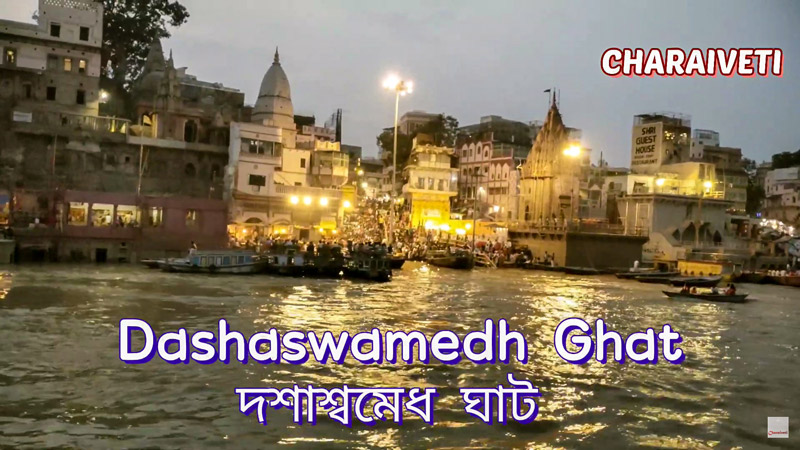
It is one of the most well-known and one of the busiest ghats of Varanasi. The literal translation of Dasaswamedh means the sacrifice of ten horses. According to legends, ten horses were sacrificed by Lord Brahma at this very site to allow Lord Shiva to return from banishment. Owing to this mythological story, the ghat became famous by the name of Dasaswamedh Ghat. Myriad of Sadhus are seen on the ghat every day, performing religious rites along the banks of river Ganga. The most significant attraction here is the grand Ganga Aarti which takes place here every evening, where thousands of spectators gather around to witness the visually stunning spectacle. Thousands of earthen lamps are immersed in the waters of the holy Ganges after the Aarti, and the floating lanterns illuminate the river creating a trance-like atmosphere.
Manikarnika Ghat

It acts as the central cremation site in Varanasi and is one of the oldest and most sacred Ghats in Varanasi. According to Hindu mythology, the person cremated here achieves immediate liberation from the cycle of birth and rebirth. Manikarnika Ghat lies at the center of the five major Tirtha Sthals and symbolises both creation and destruction. Millions of people come down at this ghat to burn down the mortal remains of their dear ones and pray to the flames for eternal peace of the soul. It is an important ghat of Ghats in Varanasi.
Also present here is a sacred well called the Manikarnika Kund, which is believed to be dug by Lord Vishnu at the time of creation of this world. The ashes of the burnt bodies make one remember the inevitable destruction of everything in the world here.
Raj Ghat
Situated near to Kashi railway station, this is one of the famous ghat in Varanasi. This is next to the Raj Ghat bridge. Famous Ravidas temple is located on this ghat. It is also famous for Pind Daan and asthi-visarjan. Famous priests of Kashi are based here. The ghats in Varanasi can easily be accessed through any kind of vehicles and parking facilities are also available here. This ghat is also friendly for disabled people who cannot walk through narrow lanes of Kashi. They can easily reach here by car or bike. It is an important ghat of Ghats in Varanasi.

Scindia Ghat
Scindia Ghat also known as Shinde Ghat borders Manikarnika to the north, with its Shiva temple lying partially submerged in the river as a result of excessive weight of the ghat’s construction about 150 years ago. Above the ghat, several of Kashi’s most influential shrines are located within the tight maze of alleys of Siddha Kshetra (Field of Fulfillment). According to tradition, Agni, the Hindu God of Fire was born here. Hindu devotees propitiate at this place Vireshwara, the Lord of all heroes, for a son. It is an important ghat of Ghats in Varanasi.
Maan-Mandir Ghat
Maharaja Jai Singh II of Jaipur built this Ghat in 1770, as well as the Jantar Mantar equipped with ornate window casings along with those at Delhi, Jaipur, Ujjain, and Mathura. There is a fine stone balcony in the northern part of the ghat. Devotees pay homage here to the lingam of Someswar, the Lord of the Moon. It is an important ghat of Ghats in Varanasi.

Lalita Ghat
The late King of Nepal built this Ghat in the northern region of Varanasi. It is the site of the Ganges Keshav Temple, a wooden temple built in typical Kathmandu style. The temple has an image of Pashupateshwar, a manifestation of Lord Shiva. Local festivals including musical parties and games regularly take place at the beautiful Assi Ghat which is at the end of the continuous line of ghats. It is a favorite site of painters and photographers. It is here at the Assi Ghat that Swami Pranabananda, the founder of Bharat Sevasharam Sangh, attained ‘Siddhi’ (fulfilment/success) in his ‘Tapasya’ (endeavor) for Lord Shiva, under the auspices of Guru Gambhirananda of Gorakhpur.
Jain Ghat or the Bachraj Ghat
The Jain Ghat or Bachraj Ghat is a Jain Ghat and has three Jain Temples located on the banks of the river. It is believed that the Jain Maharajas used to own these ghats. Bachraj Ghat has three Jain temples near the river’s banks and one they are a very ancient temple of Tirthankara
Suparswanath.

Tathagat Ghat or Buddha Ghat
Tathagat Ghat is famous Ghat of Varanasi which is situated in Sarai Mohana. Sarai Mohana is situated near Saranath. It is that place where Tathagata Buddha gave his First Sermon to their five disciples. This ghat was named after Gautam Buddha. The word “Tathagata” is synonyms of Gautam Buddha. It is also called Buddha Ghat. It is believed that the Buddhist People used this ghats. There is one Tathagata Buddha (Bhagavan) statue situated in the Ghat campus.
Harishchandra Ghat
Another ghat that reminds us of mortality and tells us how transient everything is Harishchandra ghat. This is the place where again the burning of the corpse takes place and is called a place of second burning. This is because of this reason that this ghat is being named as Adi Manikarnika (Manikarnika ghat being the original cremation ground). The ghat has the same relevance as Manikarnika ghat of providing a Moksha – (ultimate salvation) to a soul cremated here. Hindus from distant places bring their dead relatives here to perform the last rites.
As the name of the ghat, it is named after the mythological King Harish Chandra, who once worked at the cremation ground here for the perseverance of truth and reality. It is because of this deed of the King Gods rewarded him of by restoring his lost throne and his dead son to him. However, in the late 1980s, the ghat was given a modernized version when an electric crematorium was opened here.
Kedar Ghat
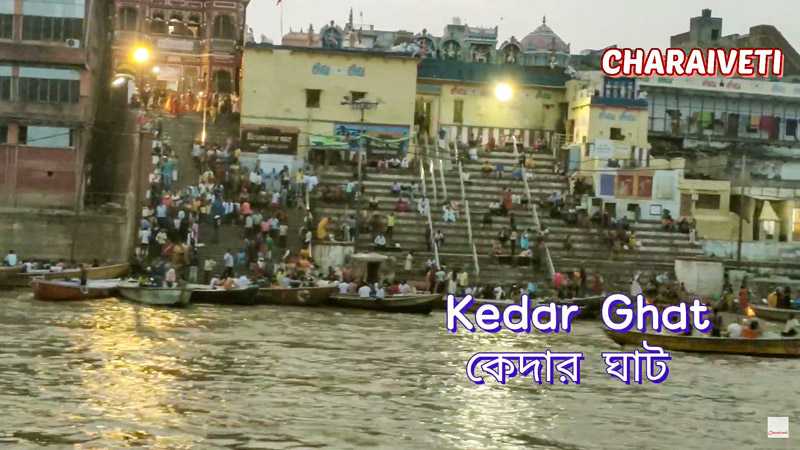
On the Sonarpura road is the narrow Kedar Gali leading to Kedar Ghat. Kedar Ghat is one of the oldest and the maximum visited religious ghats of Varanasi. The Kedar Ghat houses the Gauri Kund, a small water pool that has a picture of Gauri, Lord Shiva’s wife within the eastern wall.
It is stated that the water on this Kund has remedial properties. The Kedar Eswara Shiva Temple, on the Kedar Ghat, has great mythological significance and it is believed that anyone who visits this temple receives similar bliss and blessings as traveling to Kedarnath Temple which is one of the twelve Jyotirlingas in India. The ancient temple of Kedareshwara is especially revered by Pilgrims from South India. The Government of Uttar Pradesh has renovated this ghat with a proper base in 1958. It is an important ghat of Ghats in Varanasi.
The Maan-Sarowar Ghat was built by Man Singh of Amber. The Darbhanga Ghat was built by the Maharaja of Darbhanga. Tulsi Ghat is named after Tulsidas who wrote Rāmacaritamānasa. The Chet Singh Ghat, with a magnificent fort-like palace, is named after Chait Singh. It is an important ghat of Ghats in Varanasi.
A city older than history,
Older than tradition,
Older even than legend
And looks twice as old as all of them put together
– Mark Twain
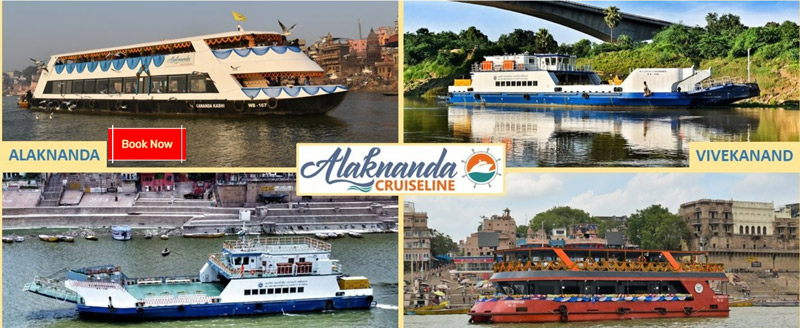
To discover all the ghats easily, one can hire the river cruise available from the southernmost part of Varanasi called Sant Ravidas Ghat. By availing the Alakananda River CruiseLine one can visit all 84 ghats in Varanasi. Besides these, small boats are also available beside various ghats. Though the seats are limited.
To have a look at all the ghats of Varanasi with mythological and historical description please follow the YouTube link provided below. Please do like and subscribe my channel for latest travel vlog.
| Ghats in Varanasi | Ghats in Varanasi | Ghats in Varanasi |
| Ahilya Ghat | Adi Keshava Ghat | Ahilyabai Ghat |
| Assi Ghat | Badri Nayarana Ghat | Bajirao Ghat |
| Bauli /Umaraogiri / Amroha Ghat | Bhadaini Ghat | Bhonsale Ghat |
| Brahma Ghat | Bundi Parakota Ghat | Chaowki Ghat |
| Chausatthi Ghat | Cheta Singh Ghat | Dandi Ghat |
| Darabhanga Ghat | Dashashwamedh Ghat | Digpatia Ghat |
| Durga Ghat | Gaay Ghat | Ganga Mahal Ghat (I) |
| Ganga Mahal Ghat (II) | Genesha Ghat | Gola Ghat |
| Gularia Ghat | Hanuman Ghat | Hanumanagardhi Ghat |
| Harish Chandra Ghat | Jain Ghat | Jalasayi Ghat |
| Janaki Ghat | Jatara Ghat | Karnataka State Ghat |
| Kedar Ghat | Khirkia Ghat | Khori Ghat |
| Lala Ghat | Lali Ghat | Lalita Ghat |
| Mahanirvani Ghat | Mana Mandira Ghat | Manasarovara Ghat |
| Mangala Gauri Ghat | Manikarnika Ghat | Mata Anandamai Ghat |
| Meer Ghat | Mehta Ghat | Munshi Ghat |
| Nandesavara Ghat | Narada Ghat | Naya Ghat |
| Nepali Ghat | Niranjani Ghat | Nishad Ghat |
| Old Hanumanana Ghat | Pancaganga Ghat | Panchkota |
| Pandey Ghat | Phuta Ghat | Prabhu Ghat |
| Prahalada Ghat | Prayaga Ghat | Raj Ghat |
| Raja Ghat / Lord Duffrin bridge / Malaviya Bridge | Raja Gwalior Ghat | Rajendra Prasad Ghat |
| Ram Ghat | Rana Mahala Ghat | Rewan Ghat |
| Sakka Ghat | Sankatha Ghat | Sarvesvara Ghat |
| Scindia Ghat | Shitala Ghat | Shivala Ghat |
| Sitala Ghat | Somesvara Ghat | Telianala Ghat |
| Trilochana Ghat | Tripura Bhairavi Ghat | Tulsi Ghat |
| Vaccharaja Ghat | Venimadhava Ghat | Vijayanagara |

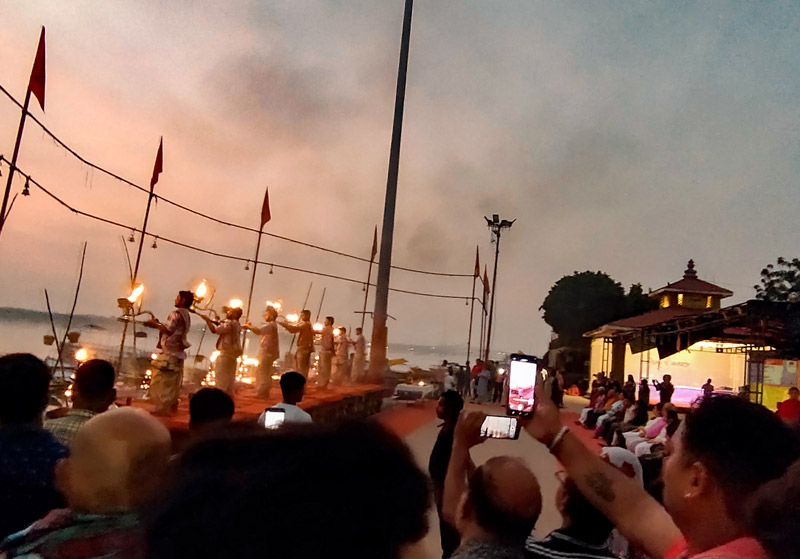




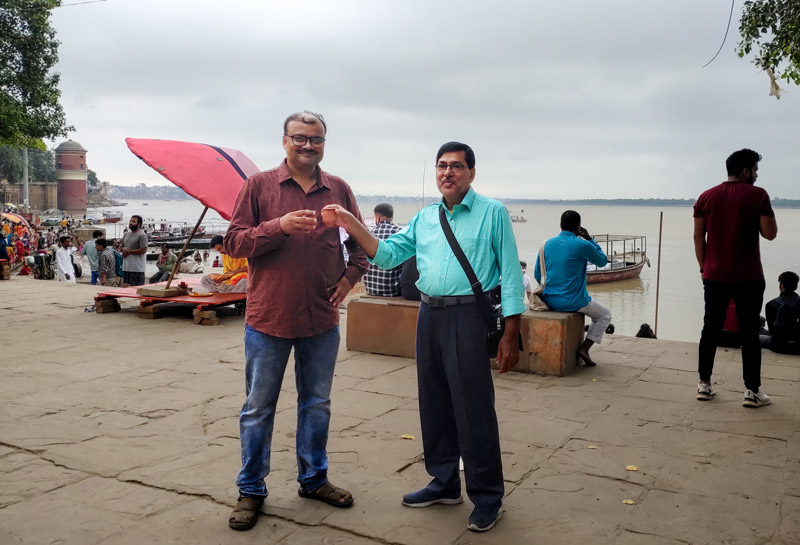

r o samne theke ghat guli dekhar ichha roilo.
Wish to go with cruiseline one day. Thank you for the information
Informative.
lovely vlog